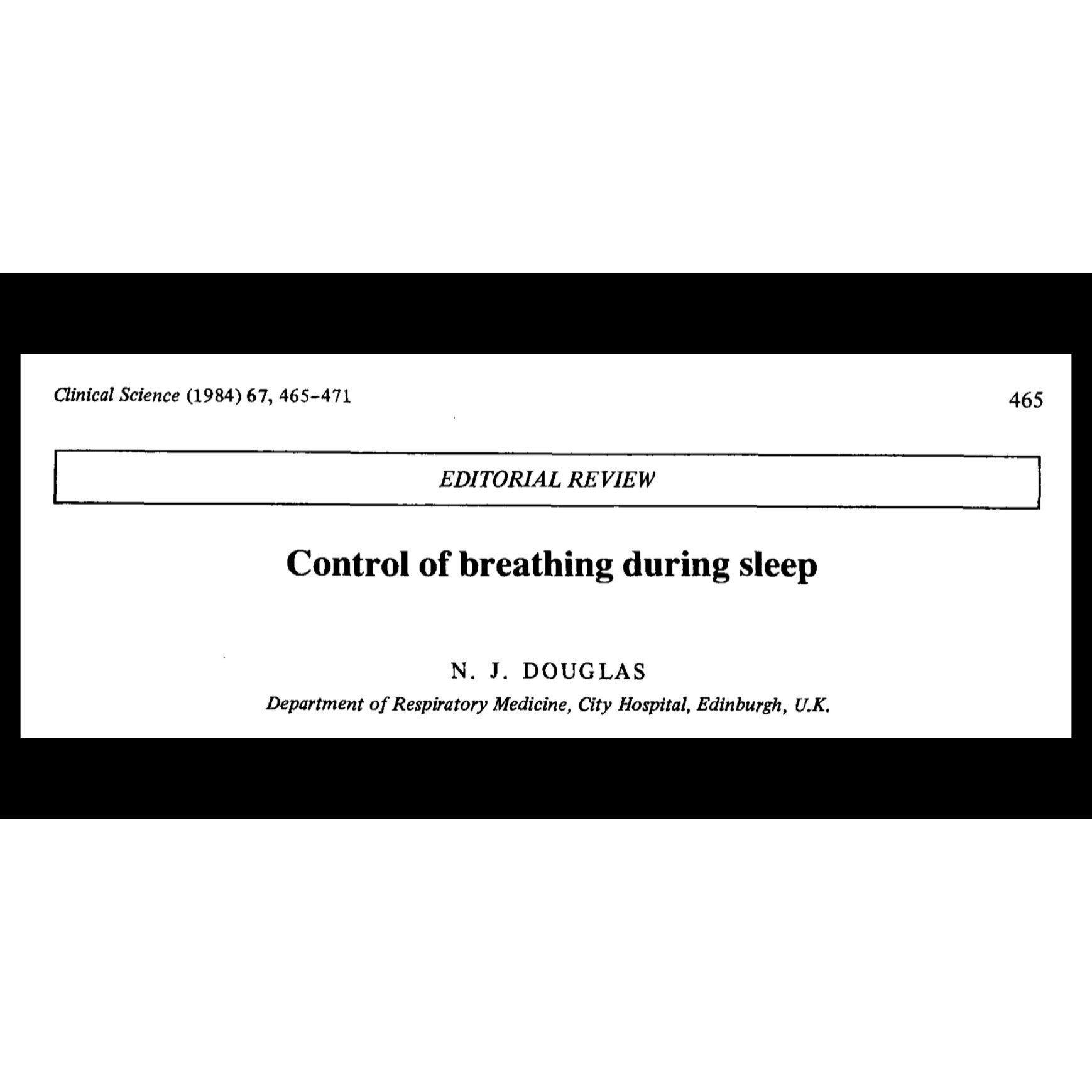Key Points
Sleep-disordered breathing is common, even among healthy individuals
The normal inputs to and reflexes of the respiratory system are dampened during sleep
Added carbon dioxide (CO2) might be the best treatment for sleep-disordered breathing
The Breathing Diabetic Summary
Sleep-disordered breathing is common, even among healthy individuals. As we have discussed before, breathing during sleep is shallow and irregular. Not exactly what we would expect. But, the word “disordered” could be a misconception. It is only disordered relative to wakefulness. It might be completely normal for sleep.
I digress. This paper examines the mechanisms behind sleep-disordered breathing at large, and for more serious issues such as central sleep apnea.
Our normal breathing system does not work correctly during sleep. For example, while awake, our bodies do amazing things to make sure blood gases stay within a specific range and that the breathing muscles do as little work as possible.
During sleep, however, we commonly experience respiratory acidosis. Additionally, the upper airways often get narrower because the breathing muscles are not recruited in the same way they are while awake. Thus, both chemical and mechanical breathing deficiencies occur during sleep.
There are several reasons for these deficiencies.
To begin with, sleep reduces input to the breathing muscles. This reduction causes the airways to narrow (these muscles act to keep them open) and increases breathing resistance.
Sleep also reduces chemoreflexes, meaning that your body is less sensitive to high CO2 and low O2. This can cause respiratory acidosis or blood gas imbalance.
On the more severe side, many patients with central apnea syndrome have chronic hypocapnia (low CO2), which might predispose them to apnea. For example, if you are chronically low on CO2, your body might try to compensate for this during sleep. It might compensate by reducing breathing or even stopping it. (That’s my speculation, not the paper’s.)
So, what does all of this mean for you? Interestingly, this “Sleep and Breathing State-of-the-Art Review” concludes that CO2 might be the best treatment for SDB. Added CO2 will stimulate the respiratory muscles and therefore prevent narrowing of the upper airways. Additionally, CO2 is a smooth muscle dilator, which will help increase blood flow to the muscles.
There are two simple ways we can “add” our own CO2 tonight. First, you can tape your mouth while sleeping. This will reduce breathing volume and increase CO2. Paradoxically, nose breathing also reduces upper airway resistance during sleep, while it increases breathing resistance during the day.
Second, we can practice light breathing during the day, and before sleep, to increase our tolerance to CO2. By doing this consistently, we can reset our baseline CO2 back to normal values and improve our breathing during sleep.
Abstract
We present a view of the neuromechanical regulation of breathing and causes of breathing instability during sleep. First, we would expect transient increases in upper airway resistance to be a major cause of transient hypopnea. This occurs in sleep because a hypotonic upper airway is more susceptible to narrowing and because the immediate excitatory increase in respiratory motor output in response to increased loads is absent in non-REM sleep. Secondly, sleep predisposes to an increased occurrence of ventilatory "overshoots", in part because abruptly changing sleep states cause transient changes in upper airway resistance and in the gain of the respiratory controller. Following these ventilatory overshoots, breathing stability will be maintained if excitatory short-term potentiation is the prevailing influence. On the other hand, apnea and hypopnea will occur if inhibitory mechanisms dominate following the ventilatory overshoot. These inhibitory mechanisms include: a) hypocapnia-if transient, will inhibit carotid chemoreceptors and cause hypopnea, but if prolonged will inhibit medullary chemoreceptors and cause apnea; b) a persistent inhibitory effect from lung stretch; c) baroreceptor stimulation, from a transient rise in systemic blood pressure immediately following termination of apnea or hypopnea may partially suppress the accompanying hyperpnea; d) depression of central respiratory motor output via prolonged brain hypoxia. Once apneas are initiated, reinitiation of inspiration is delayed even though excitatory stimuli have risen well above their apneic thresholds, and these prolonged apneas are commonly accompanied by tonic EMG activation of expiratory muscles of the chest wall and upper airway.
Journal Reference:
Dempsey JA, Smith CA, Harms CA, Chow C, Saupe KW. Sleep-Induced Breathing Instability. Sleep. 1996;19(3):236-47.




